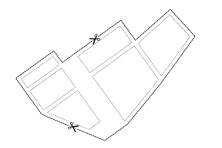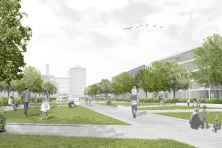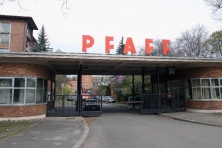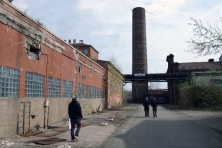Who Knows What Tomorrow Brings? Ein gesellschaftsspiel
Kaiserslautern (DE) – Runner-up
TEAM DATA
Team Representative: Heiko Ruddigkeit (DE) – landscape architect; Associates: Stefan Wiebersinsky (DE) – engineer landscape architect; Pablo Tena Gomez (ES) – architect
STUDIO RW Landschaftsarchitektur | Pablo Tena Architekt, Fürbringerstraße 20a, 10961 Berlin – Deutschland
+49 30 0176 229 38 680 – mail@studio-rw.de – www.studio-rw.de
See the complete listing of portraits here
See the site page here

P. Tena, H. Ruddigkeit and S. Wiebersinsky
INTERVIEW
1. How did you form the team for the competition?
We are working on projects in collaboration since we share a common office space.
2. How do you define the main issue of your project, insisting on how you answered on this session main topic: adaptability and urban rhythms?
The question is how flexible and open does planning could/should be, in order to be able to adapt to changing conditions and to the increasing demand for space from the various city-users. According to this question we were looking for a shining example for a planning methodology, which on the one hand allows high flexibility in the planning result and, on the other hand, leaded by a master guidance system, accomplishes stability within the planning process.



3. How did this issue and the questions raised by the site mutation meet?
The site of the competition has a great potential because of its strategic urban position. Through new ideas the PFAFF area could become a great place for living and working, with lively and diverse neighborhoods.


4. Have you already treated this issue previously and could you present some reference projects that inspired yours?
We think the issue of adaptability and urban rhythms should always be considered within a planning process. But of course, the more complex and larger the project, the more important the question becomes… Actually we were not thinking of any exemplary project in this case. Quite reverse, bad planning examples send us to familiarize ourselves with this issue. These examples, we all know, are easy to find all over the world…
5. Today –within the era of an economic crisis and sustainability– the urban-architectural project should reconsider its production method in time; how did you integrate this issue in your project?
Who knows what tomorrow brings? We developed a “parlour game”, with open end and unforeseeable¬ course. The draft design demonstrates how the Pfaff site can be developed on the basis of a planning methodology with specific rules pertaining to the access system, building height, building plots and open space typology. The demolition of buildings, new construction and intermediate uses can take place concurrently and in flexible temporal parts with the proposed concept.
6. Is it the first time you have been awarded a prize at Europan? How could this help you in your professional career?
It was the first time we have been awarded a prize at Europan.